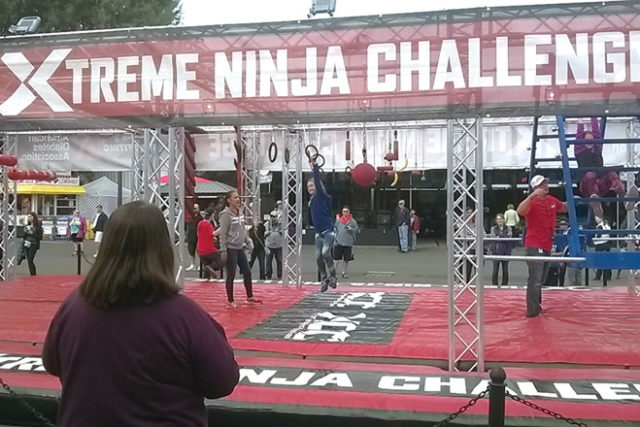By David Yamaguchi
The North American Post
As most readers of this paper know, Japanese people have been in present-day Washington as shipwrecked sailors since 1834 (see Wikipedia, “Otokichi”), and as immigrants since about 1900. From this, one has to wonder what our collective influence has been on state popular culture.
One way to answer this is to walk the Puyallup Fair Fairgrounds, aka the Washington State Fair, to see what there is that reflects Japanese culture.
Just inside the Blue Gate entrance, there is the “Extreme Ninja Challenge.” It is an obstacle course intended to encourage youth to test their strength and agility. It promotes the benefits of exercise.
Among the carnival rides, there is the “Kamikaze,” which features aerial cars that “fly” upside down.
Turning to the various lunch booths, there is—you guessed it— T-e-r-i-y-a-k-i!
In the horticultural building, there are also a few small bonsai trees.
To the fair’s credit, there is a reasonably in-depth display on Japanese Americans staying at the Fairgrounds during World War II. It is in a glass case in an agricultural history building among other displays including glass milk bottles, porch milk boxes, and the like. But if the comment of the lady viewing it next to me is any indication, knowledge of this episode of regional history remains scarcely known.
“That happened here?” she asked out loud.
Ninja, Kamikaze, Teriyaki, and Bonsai. Four words in a century.
All this made me wonder if we should do a little less “preaching to the choir,” as we do at the Cherry Blossom Festival and Japan Fair, and do a little more outreach to the largely white population that attends the Fair.
There are probably at least two reasons why it isn’t being done.
The first is that many of us are now third- to fourth-generation JAs, with a fifth generation on the way. We no longer have anything to prove. Like other Americans, we just live here. We are a part of the fabric of society. Moreover, like other humans, we do what humans have always done. We spend our free time with other members of our tribe, simply because it is comfortable.
The second reason for not doing further outreach at the fair is that the naive questions would likely drive us nuts.








